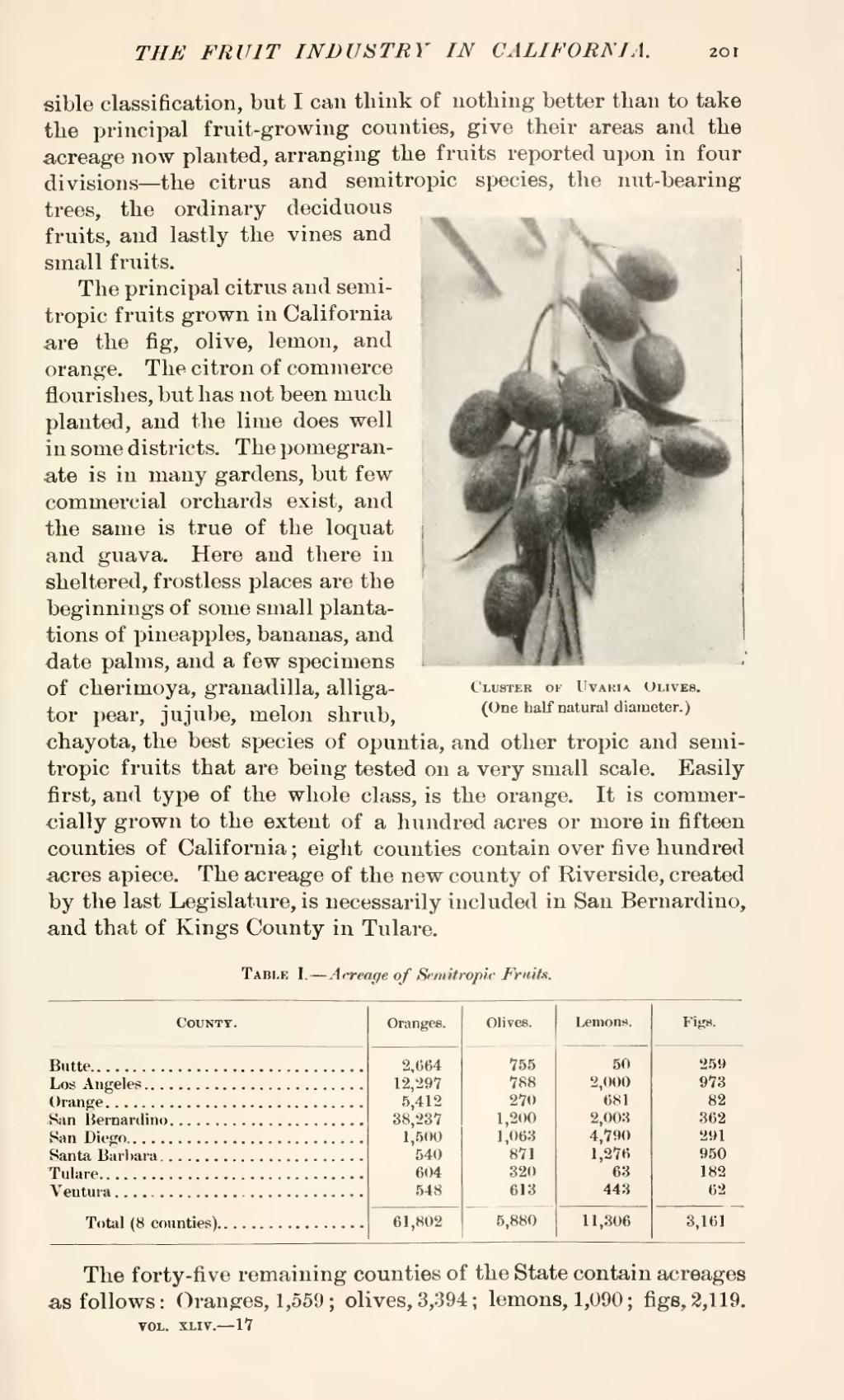sible classification, but I can think of nothing better than to take the principal fruit-growing counties, give their areas and the acreage now planted, arranging the fruits reported upon in four divisions—the citrus and semitropic species, the nut-bearing  Cluster of Uvaria. Olives.
Cluster of Uvaria. Olives.
(One half natural diameter.) trees, the ordinary deciduous fruits, and lastly the vines and small fruits.
The principal citrus and semitropic fruits grown in California are the fig, olive, lemon, and orange. The citron of commerce flourishes, but has not been much planted, and the lime does well in some districts. The pomegranate is in many gardens, but few commercial orchards exist, and the same is true of the loquat and guava. Here and there in sheltered, frostless places are the beginnings of some small plantations of pineapples, bananas, and date palms, and a few specimens of cherimoya, granadilla, alligator pear, jujube, melon shrub, chayota, the best species of opuntia, and other tropic and semitropic fruits that are being tested on a very small scale. Easily first, and type of the whole class, is the orange. It is commercially grown to the extent of a hundred acres or more in fifteen counties of California; eight counties contain over five hundred acres apiece. The acreage of the new county of Riverside, created by the last Legislature, is necessarily included in San Bernardino, and that of Kings County in Tulare.
Table I. Acreage of Semitropic Fruits.
| County. | Oranges. | Olives. | Lemons. | Figs. |
| Butte | 2,664 | 755 | 50 | 259 |
| Los Angeles | 1,2297 | 788 | 2,000 | 973 |
| Orange | 5,412 | 270 | 681 | 82 |
| San Bernardino | 38,237 | 1,200 | 2,003 | 362 |
| San Diego | 1,500 | 1,063 | 4,4790 | 291 |
| Santa Barbara | 540 | 871 | 1,276 | 950 |
| Tulare | 604 | 320 | 63 | 182 |
| Ventura | 548 | 613 | 443 | 62 |
| Total (8 counties) | 61,802 | 5,880 | 11,306 | 3,161 |
The forty-five remaining counties of the State contain acreages as follows: Oranges, 1,559; olives, 3,394; lemons, 1,090; figs, 3,119.

